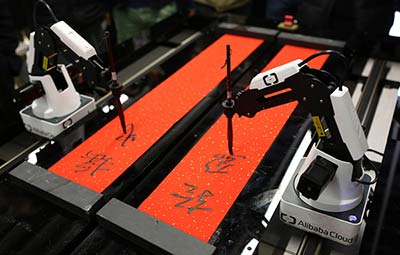China's economic growth slower but healthier
BEIJING -- China's economic growth of 7.7 percent in the first quarter fell short of market expectation, triggering jitters in the global markets.
Some investment gurus expressed pessimism about the Chinese economy and short sold Chinese stocks, while Fitch led the chorus by cutting China's sovereign credit rating earlier in April, citing "underlying structural weaknesses."
However, analysts say China's slower growth, down from 7.9 percent in the final quarter of 2012, was still above the 7.5-percent full-year target for 2013 set by the government in March.
The Chinese government was keen on pushing reforms and had prioritized balance over speed, and quality over quantity, they said.
World Bank President Jim Yong Kim told reporters in Washington in mid-April, despite the slower growth, the Chinese leadership was "laser-focused" on strategies that would build the foundation for future growth.
The key for China was not to "sit around and react to the short-term fluctuations in growth figures," but "think about the medium term and long term and make those kinds of investments that are necessary to ensure growth going forward," he told the IMF/World Bank Spring Meetings.
On April 16, the International Monetary Fund (IMF) cut its world economic growth forecast for 2013 to 3.3 percent, 0.2 percentage point lower than its earlier estimate in January.
The IMF predicted the Chinese economy would grow 8 percent in 2013, while the emerging markets and developing countries would grow 5.3 percent. Meanwhile, the highest growth rate for developed countries was no more than 2 percent.
"Fast and slow are relative concepts," said Christian Murck, president of the American Chamber of Commerce in China (AmCham China), a non-profit organization representing US businesses in China.
Considering the overall slowdown in the world economy, the 7.7-percent growth in the first quarter for China, the second largest economy in the world, could not be called slow, he said.
China's cooler growth pointed to a transforming and improving economy, analysts said, as a blind obsession with high-speed growth could trap the country in higher resources consumption and environmental costs.
Instead of following the old path, the Chinese government is pushing reforms across the board, including structural adjustment, industrial upgrading and boosting domestic consumption. It is also carrying out income distribution reforms, changing the role of the government and boosting the private sector.
"A GDP slowdown may help Beijing tackle some of the structural problems with the economy, once described by former Premier Wen Jiabao as 'unbalanced, uncoordinated, and unsustainable,'" US magazine the Atlantic said in an opinion article.
In an interview with popular Chinese website Tencent, American economist and Nobel prize winner Michael Spence said some rating agencies were overreacting to China's slower growth in the first quarter.
In his view, China had made a smart move by slowing the economy a little to ensure better quality and efficiency, while keeping macroeconomic stability.
Many investment banks cut China's growth forecast on weak first-quarter figures to avoid hyper-sensitivity in the international markets.
Fang Fang, Asia vice chairman of JP Morgan Investment Banking, told Xinhua, in addition to GDP, the consumer price index and the purchasing managers' index, China analysts needed to monitor long-term indicators such as average disposable income, social security coverage, the share of the services sector in the national economy, and tax policies for small- and medium-sized enterprises.
That would help them grasp new growth potential in China's economic transformation, and help the world share China's reform bonus in the long run, he said.
In an article, "Hidden benefits of China's slower growth," the Financial Times said the Chinese government had acknowledged the days of double-digit expansion were over and the country was implementing a transformation of its growth model.
"If China is able to convert its model to a slower but more sustainable growth path, the opportunities for other countries could be just as great as they have been for commodity exporters over the past decades," it said.























